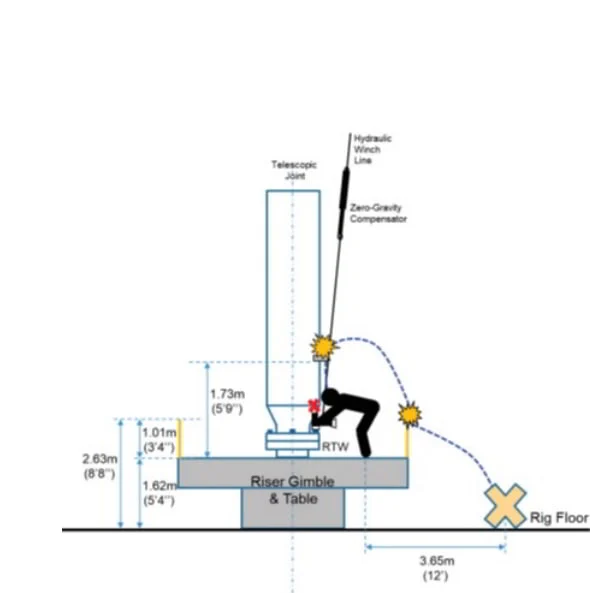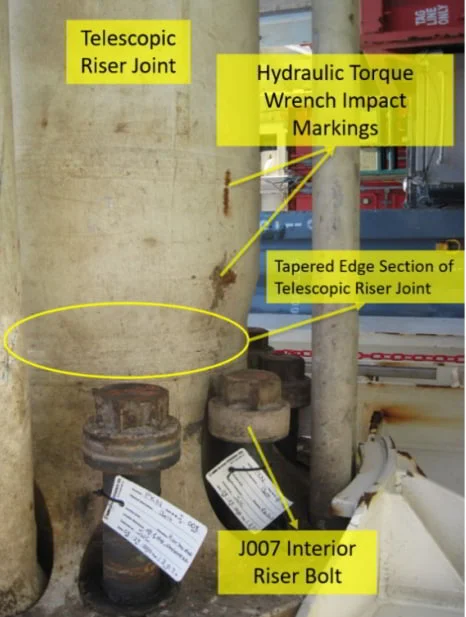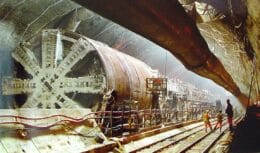
According to an alert published by BSSE, the lack of training on oil and gas exploration platforms led to the death of a crew member in the Gulf of Mexico
A security alert was published in the week passed by the BSEE, explaining about the pitch in the air of a crew member, after being hit by a hydraulic torque wrench, hitting a lifting brace approximately two meters above the raised work deck before falling to the platform floor, on an exploration unit located in the Gulf of Mexico, in 2020.
According to the offshore-energy website, the fact occurred on August 23, 2020, during the unlocking of the explosion preventer lower marine riser package in preparation for the relocation of the oil and gas platform vessel. The crew member received first aid and was transported to the drillship's hospital Pacific Khamsin, where he was later pronounced dead.

At the time of the incident, the drillship Pacific Khamsin was owned by Pacific triplet. However, following Pacific's merger with Noble Corporation in March 2021, the drillship is now owned by Noble.
Lack of training on oil and gas exploration platforms
According to BSEE, the incident investigation found that the oil and gas platform crew was using a hydraulic torque wrench to extract bolts from a riser telescoping joint (TJ) flange.
During operation, the HTW T socket became trapped between the screw head and the tapered edge of the TJ. After failing to manually dislodge the HTW using physical exertion, the rig crew utilized a hydraulic wrench to provide upward force and applied tension to release the tool.
After applying the force upwards, the torque wrench released under tension and shot upwards, hitting the crew member, characterizing that the platform ship's team did not have the necessary training for emergency situations.
The US regulator alleges that factors contributing to this incident include failure to recognize the potential HTW trapped in the TJ's beveled edge, lack of comprehensive understanding of the task risk assessments associated with riser pull, failure to effectively communicate all learnings from previous riser pulls, lack of formalized training for HTW and HUW utilization, and adverse HTW and HUW design.

What to do in emergency situations on oil and gas platforms?
With this in mind, BSEE recommends that:
- Oil and gas platform operators and contractors ensure that the Job Safety Analysis captures the limitations of the HTW when in use;
- Verify that all employees understand the Work Safety Analysis and have been formally trained to operate the HTW and HUW;
- Emphasize initiation of Work Stop Authority if imminent danger is observed; and expanding the Drill Floor Observer's responsibilities to monitor all aspects of work taking place on the rig floor;
Furthermore, the US regulator explains that operators and contractors of oil platforms and gas should consider using an HTW with a compatible design that matches the beveled edge of the TJ; explore options for employing a load indicator or similar design mechanism in the HUW package; and ensuring pre-work reviews and promoting the sharing of feedback from past experiences.













Air Force F-16 fighters…
True friend, what they shot down were…
Air Force F-16 fighters…
Well... It's flying scrap... Typical...
Air Force F-16 fighters…
I would like to know what planet you live on…
They discover the third largest deposit…
That’s why all foreigners and NGOs…
Air Force F-16 fighters…
Which genocide are you talking about? Than…
I would like to have the new truck…
I want to do my writing
This kit can be installed in any…
Come be a watermelon, you too
This year is one of the best!
Great car, there's just one problem...
I've already used 4 Fiat Strada and now...
I had an adventure in 2011, I stayed with her…